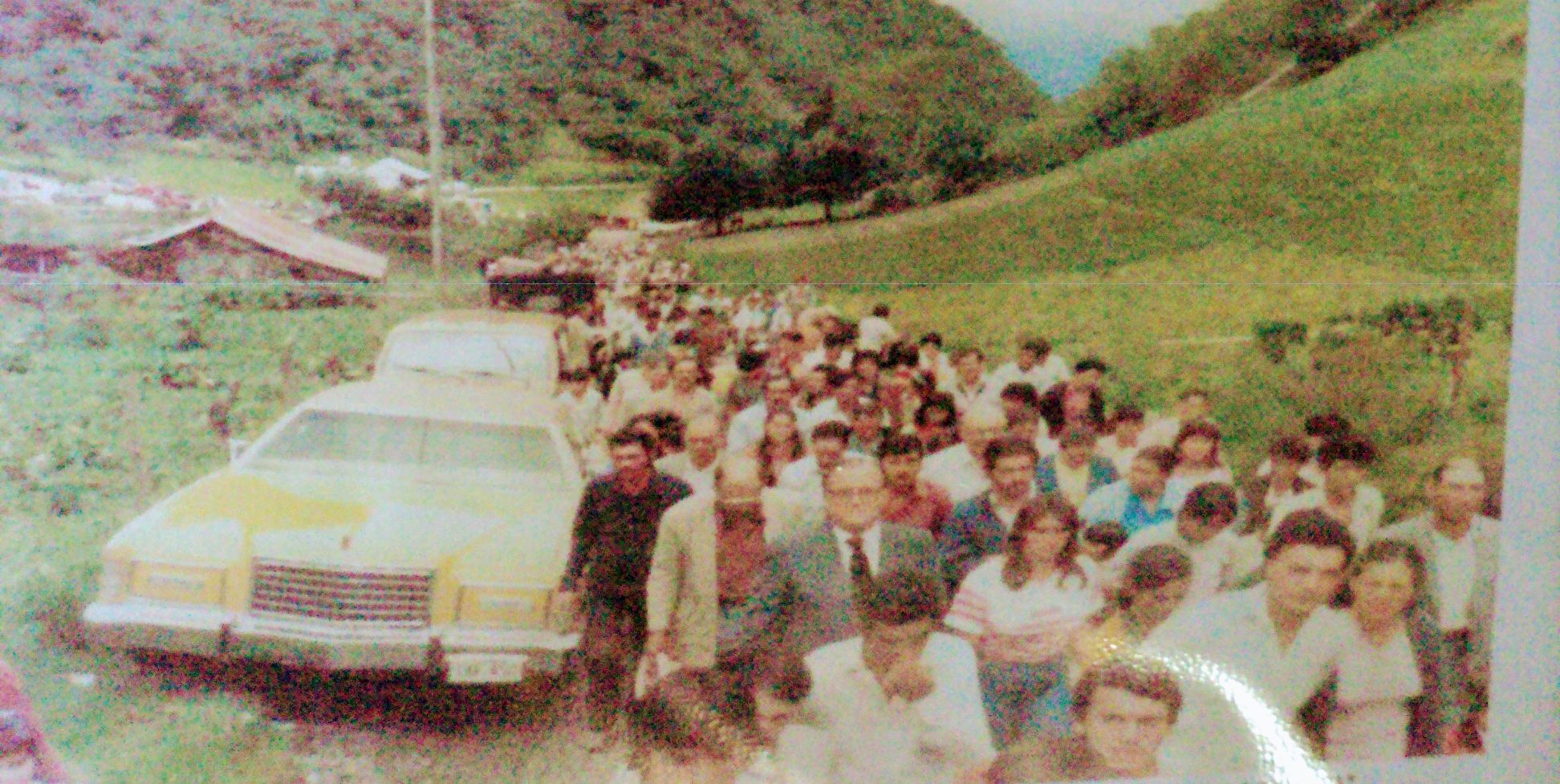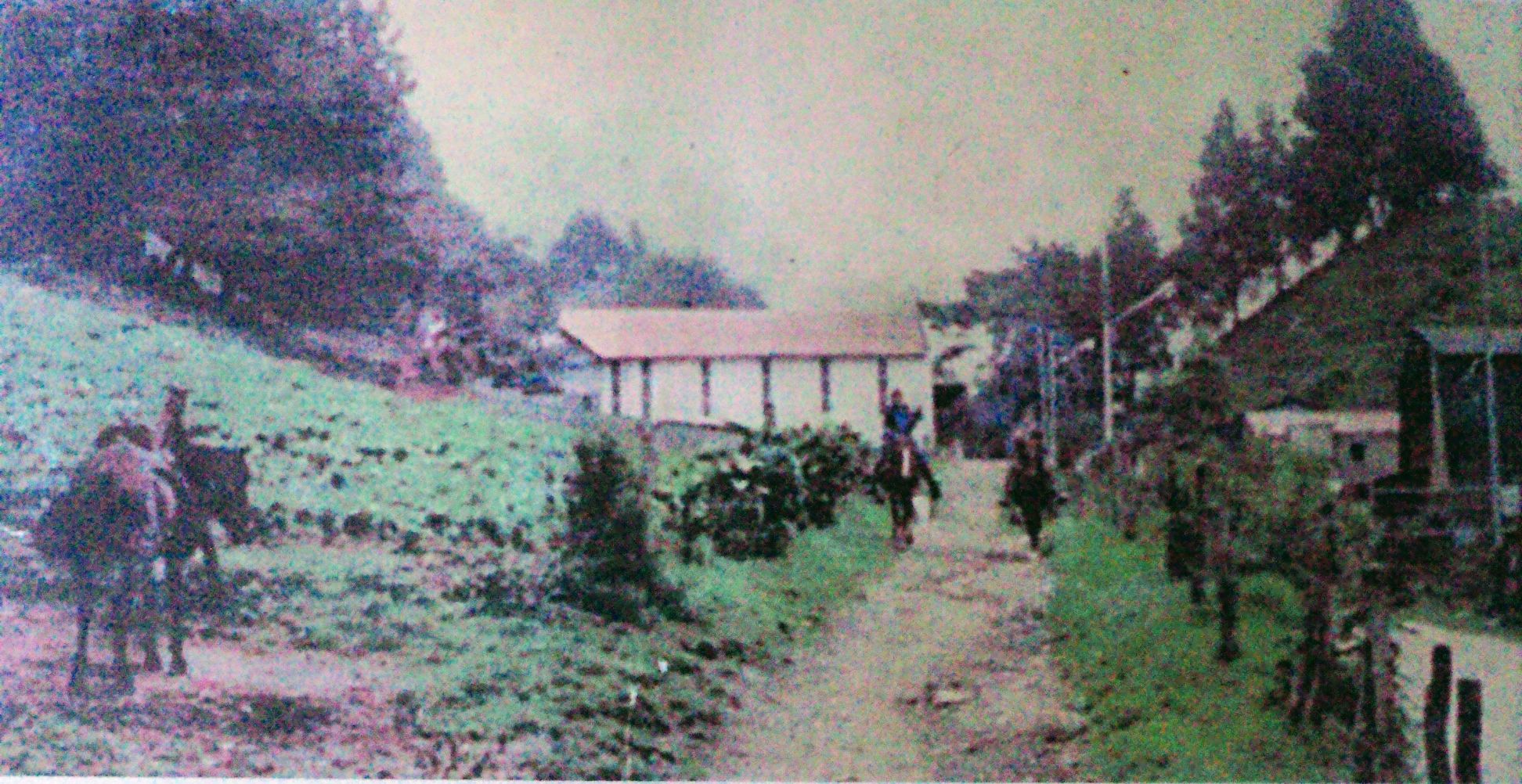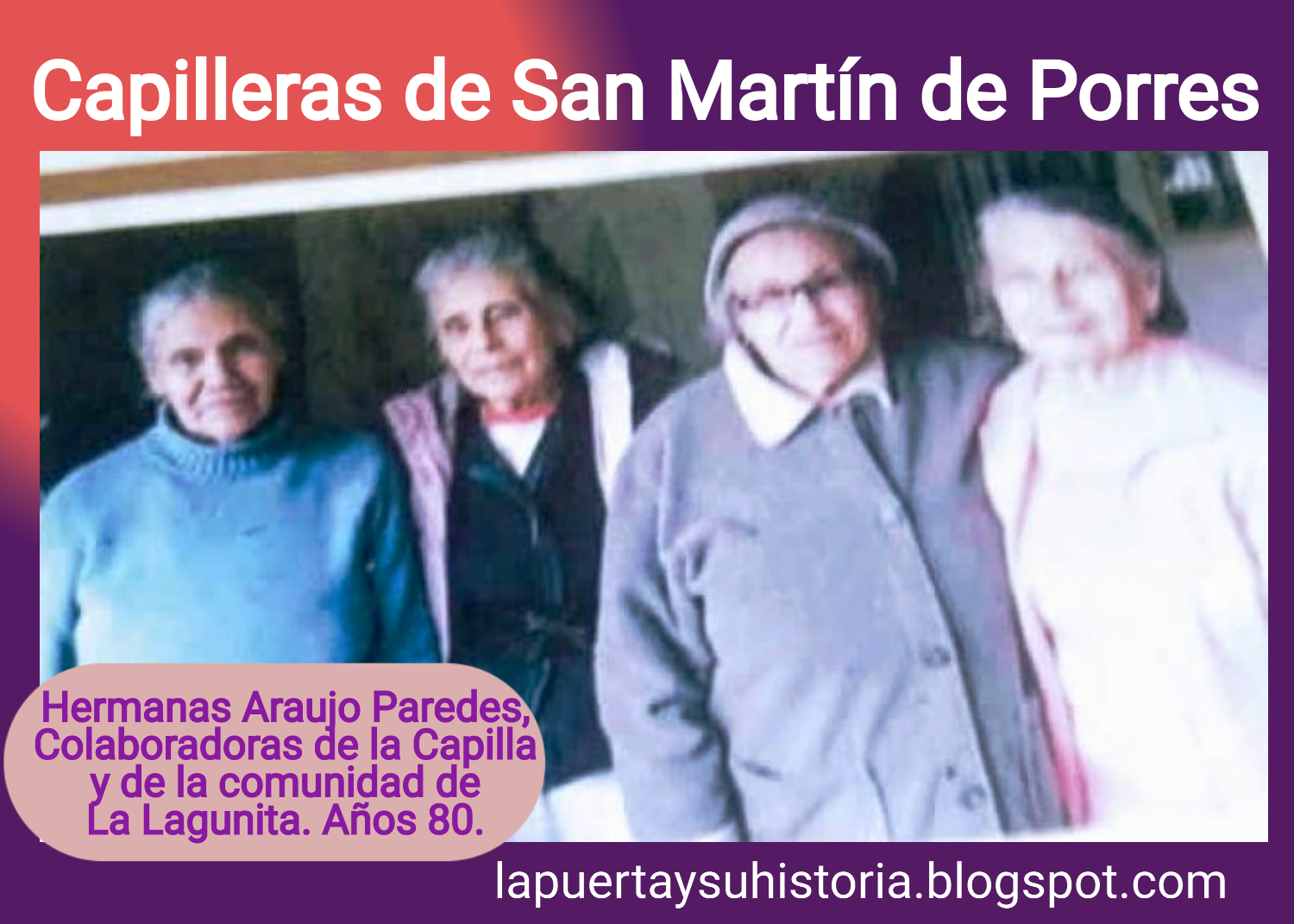The hubbub of the first women, young and old, organizers of the celebration, began to be felt in the taciturn stillness of the La Puerta parish, the bugles and noises of the old shock absorbers of the cars that were going up and arriving in the middle of the cool morning, and the boys from the La Lagunita farmhouse, expressed their joy. Several liked to ride a horse and did so that day, others were on the rump.
The long road crowded with farmers and a repertoire of midwives with and without children. The shouting, the whimpering and the laughter of the “Chinese” did not bother us at all, a holiday by and for everyone.
– Greetings and blessings! They are heard and seen. At that time, children and young people knelt on the ground and raising their two joined hands, asked the godfather, grandfather or uncle for a blessing; Of that magnitude was the respect towards these people.
Barely 50 meters away lived the Araujo Paredes sisters, community collaborators, with outstanding social sensitivity and religiosity. From her family home, Miguelito Romero, she heard those jubilant and suggestive noises, initiators of the long-awaited inauguration and a spiritual and joyful emotion, she felt in her chest. All that year, he was worried about his termination, because in the affairs of God, he had to be very regal and compliant.
They were members of the native and emblematic families of farmers of the place, the Ruz, Carrizo, González, Rivero, Burelli, Parra, Rivero, Abreu, Araujo, Paredes, Castellanos, among others. Now, he was pleasant until he remembered the disappointments that happened to him for the construction, he smiled benevolently, understanding that spirituality and joy will always be twinned. That day, the Chapel was inaugurated.
Brief historical review
Traditionally in these mountain towns, we know as a chapel, that building that is built in places away from urban centers, equipped with its altar, its images and altarpieces, and that distinguishes its name or particular dedication, so that the Catholic parishioners of the place , have a place to pray and receive the Eucharist on certain dates. Most of the time, its construction has been the product of community initiatives, as was the case of the Chapel of La Lagunita.
The La Lagunita site is located a few kilometers from the town of La Puerta. It was formerly called El Portachuelo and in 1963, the year in which Miguel Romero bought this possession from Francisco Villarreal. Mr. Alberto Romero, Miguel’s son, remembers that at that time, there were only about 7 houses of farming families, around the La Lagunita pond, which were those of “Senobio Rivas, Carmelito Araujo, Domingo González, Argimiro González, Mrs. Trina, grandmother of Luis Alfonso Rivero, and Numa Viloria who had a small winery.” During his childhood, the 1940s, recalled Antonio Lino Rivero, who is well acquainted with the place and its characters, that “in this hamlet, barely five families lived, Ulises Abreu’s, Ulises Abreu’s, of Pancho Abreu, Zenobio Rivero and a Mr. Argimiro, whose last name I do not remember» (Conversation with Antonio Lino Rivero, on January 18, 2022, La Puerta).
The chapel is located south of La Puerta Parish, Valera Municipality of Trujillo state, a few steps from the tourist pond, called La Lagunita. It is about 10 minutes (by motor vehicle) from the urban population of La Puerta, Trujillo state; 7 kilometers away from the urban area of that Parish. Antonio Lino himself recalled: <
Centuries before the appearance of the pond that we know today as a tourist site, this site was known as El Portachuelo possession; In 1777, it was considered by Bishop Mariano Martí as a suitable place to promote a colonial village or town with its church, due to its people, its good climate, its waters and the fertility of the land. Height over 2,000 meters above sea level. Its cold and humid climate, with temperatures ranging between 12 and 15 degrees Celsius.
Its first settlers were indigenous from the Timoto nation; According to the historian Amílcar Fonseca, this site was the residence of the cacique or caudillo named Mukutí, whose toponym remained, at a very close point, known for its historical facts; Likewise, it was a point of entry and passage on the old indigenous road of the La Culata mountain range, which leads to the towns in the south of Lake Maracaibo.
After the bursting of the pond, now known as La Lagunita, in 1965, they drained the flooded houses that were around it and fenced it off, which little by little became a point of attraction for visitors and tourists. In 1975, the La Puerta – La Lagunita highway was inaugurated, which gave this site a greater economic boost. The main road was paved, and the part where tourists ride on horseback remained dirt.
In the 80s of the 20th century, the inhabitants of this village, in view of the increase in the population and the number of visitors and tourists, came to an agreement to build a Chapel, which would serve as their religious precinct and also to the visitors of La Lagunita. Likewise, they agreed on his Catholic dedication: the Saint of the broom: Saint Martin de Porres (b.9-12-1579- m. 3-11-1639 Lima, Peru).
We have inquired about the motivations for choosing this Saint, some think that because he is close to the San Martin farm, a space attacked in those dark moments of the Gomez dictatorship, when looking for Colonel Américo Burelli, to capture him, he managed to sneak away and save the miraculous life, but the goods were looted and the house was burned; others believe that since he is the protector of animals, the name was taken from him, and the most skeptical, that none of the previous ones, but that there was a certain and ancient devotion to the Holy mulatto.

The first and most enthusiastic of the collaborators of this community work was Miguel Romero, who donated the land where the Chapel is built. Antonio Lino Rivero, aware of this community initiative, recalls that <
There were collaborators such as Miguel Ángel Burelli Rivas, and others, who contributed money, materials and also those who gave their work, for the conclusion of such a long-awaited religious work.
Rivero himself explained that <
It was inaugurated in 1982, according to the testimony of Antonio Lino Rivero, a native of El Censo, who was there that day of Christian rejoicing for this community, that the Chapel, “It was built thanks to the efforts of men like Mr. Ramón Araujo, Dr. Miguel Ángel Burelli, among others from the community. The land was donated by Mr. Miguel Romero» (Photo). Construction began in 1980. The inauguration was on November 3, the day that the birth of the Holy Mulatto is celebrated, in which this prayer enclosure opened its doors.
The opening was lavish. The new building was adorned with garlands and flowers, inside the enclosure, the seats with fragrant and beautiful flowers and branches, made it more pleasant. San Martin’s liturgical feast is celebrated every year on November 3. Antonio Lino Rivero, who was present at the festive event, also recalled that «On the opening day, people from La Lagunita and neighboring communities attended. I attended the inauguration, it was a very emotional act and a lot of joy for the community» (idem), evidently, this site was advancing in equipment and basic urban planning, making the leap from a simple farmhouse, to an organized social community. In the year 2000, next to the Chapel, they built a small ambulatory.
But the Chapel was not only opened on the days of the Santo Negro festivities, but also had a group of chapels that acted as custodians of the Catholic building. Formerly, the person in charge of these prayer rooms, caring for them, decorating them and opening them, was called a Capillero, an ad honorem position. From this Chapel, the sisters Dolores, María, Francisca and Filomena Araujo Paredes are remembered, consistent collaborators of the arrangement and care.
When all the liturgical activities were completed, the elders retired to their dwellings, the chapel volunteers, before leaving, knelt, crossed themselves as a sign of respect, and finally closed the door. Miguelito waited for them, and so they went walking and talking, he accompanied them to his house. Near the pond, the hubbub of young people, waiting for the misty and cold blanket of night.
This is one of the simple and significant socio-religious events of the La Lagunita community, which occurred 40 years ago, which give materiality to the historical, social, cultural and religious evolution of the La Puerta parish, Trujillo state, in Venezuela-



